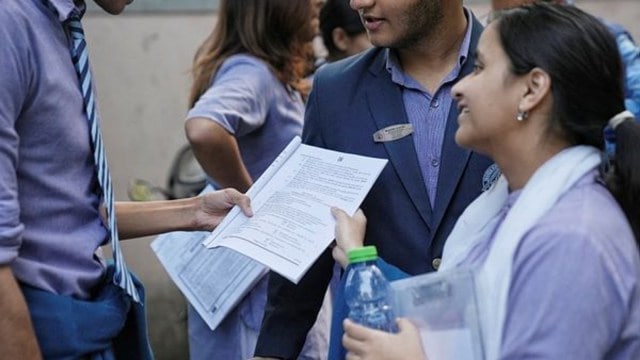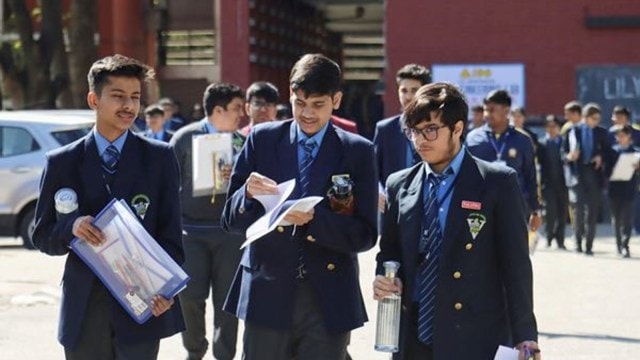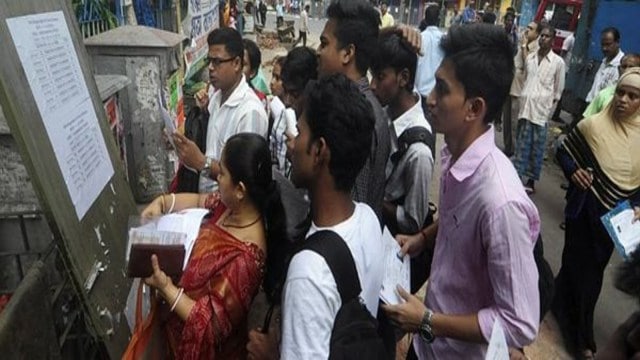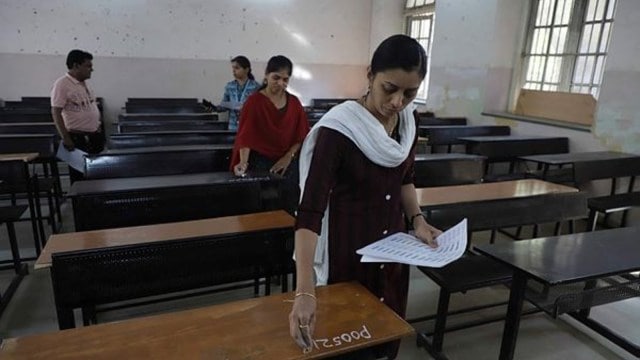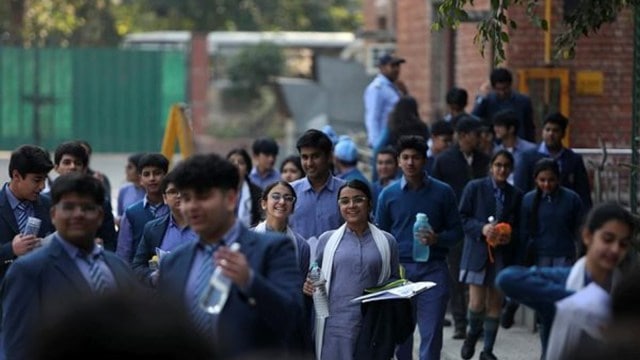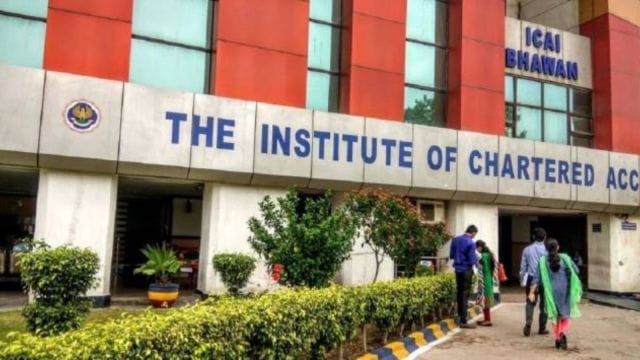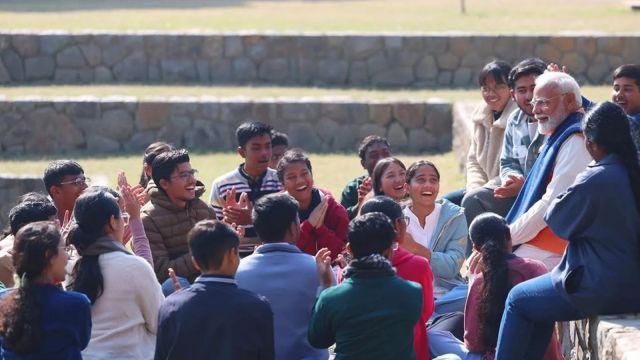
UPSC Key—4th March, 2024: National Clean Air Programme, BBIN Connectivity Project and Peace ClauseSubscriber Only
Important topics and their relevance in UPSC CSE exam for March 4, 2024. If you missed the March 1, 2024 UPSC CSE exam key from the Indian Express, read it here
FRONT PAGE
Justice Gangopadhyay of Calcutta HC says quitting to join politics, slams TMC
Syllabus:
Preliminary Examination: Current events of national and international importance.
Main Examination: General Studies II: Structure, organization and functioning of the Executive and the Judiciary—Ministries and Departments of the Government; pressure groups and formal/informal associations and their role in the Polity.
Key Points to Ponder:
• What’s the ongoing story-In an unprecedented move, Justice Abhijit Gangopadhyay, a sitting judge of the Calcutta High Court, said Sunday that he will resign as a judge and join politics.
• Who is Justice Abhijit Gangopadhyay?
• The judges of a high court are appointed by whom?
• A person to be appointed as a judge of a high court, should have certain qualifications-what are those?
• What is the role of the government in the decision-making process for the shortlisting of judges?
• Can a retired judge join politics?
• Should Judges be barred from Post-retirement appointments?
• “Calcutta High Court Judge Abhijit Gangopadhyay’s announcement of his resignation and that he would join politics marks a telling moment in the discourse around the independence of the judiciary”-Discuss
Other Important Articles Covering the same topic:
????Justice Abhijit Gangopadhyay announces resignation: In divided Bar, move raises questions on independence of judiciary
Where clean air funds allotted to states went: Drains, fountains, roads
Syllabus:
Preliminary Examination: General issues on Environmental ecology, Bio-diversity and Climate Change
Main Examination: General Studies III: Conservation, environmental pollution and degradation, environmental impact assessment.
Key Points to Ponder:
• What’s the ongoing story- A football ground; fountains; roads; underground drains. These are among the items listed by states when questioned by the National Green Tribunal (NGT) about how they utilised funds meant for tackling air pollution.
• What is the issue exactly?
• Which funds were allocated under the National Clean Air Programme (NCAP) and the 15th Finance Commission (FC)?
• To whom funds were allotted?
• What happened with the funds?
• Do You Know-According to an Environment Ministry submission in the NGT last month, 19 cities flagged by the tribunal for their deteriorating air quality received Rs 1,644.40 crore in this period. But records show that a number of states underutilised the funds and some of them spent a notable chunk on projects whose connection to air pollution may not seem readily apparent — a point brought up by the tribunal itself.
The NGT, in November 2023, had flagged the deteriorating air quality of 53 towns and cities, including the 19 mentioned above. It told the respective states to take “remedial measures” and submit details of how they utilised the funds they received under the NCAP and 15th FC.
A month later, the tribunal noted that the states which had filed the reports until then had not fully utilised the funds and that “only few states have used it for setting up AQI monitoring stations”. It said: “In some states, we have found that the funds have been utilised under the heads which may not have direct connection with improving air quality. In fact, funds are required to be utilised as per the approved action plan….”
So far, Uttar Pradesh, Bihar, Rajasthan, Haryana, Madhya Pradesh, Jharkhand, Gujarat, Maharashtra, Punjab, Meghalaya and Delhi have submitted their reports to the green tribunal. Jharkhand’s report on activities in Dhanbad, submitted last month, included the construction of four playgrounds (allotment of Rs 9.37 crore, Rs 5.1 crore spent so far) including a football ground. It also included the purchase of a “desludging machine” for Rs 3.03 crore. The largest chunk of expenditure, Rs 17.27 crore, was for “end-to-end pavement”, followed by Rs 9.12 crore for bituminous roads and Rs 7.37 crore to set up 10 air quality monitoring systems.
The Bihar government, too, submitted its report on Patna to the NGT last month. It said funds from the 15th FC (`184.58 crore spent) were used for activities including “construction of roads and underground drain work”, “desilting of drains”, renovation of old parks, procurement of CNG buses, purchase of water sprinklers and sweeping machines, and establishment of an electric crematorium. Of NCAP funds, Rs 9.68 crore was spent on activities including the establishment of a vermicompost unit, awareness through radio jingles and “development of parks”.
Delhi is in the process of spending its NCAP funds on 14 mechanical road sweepers, 28 anti-smog guns, two pothole repair machines, “creation of green buffers along traffic corridors”, “end-to-end paving”, and construction and demolition waste management.
• What is the National Clean Air Programme (NCAP)?
• National Clean Air Program (NCAP) 2019-Key Features
• National Green Tribunal-Role and Mandate
• National Green Tribunal’s (NGT) Directives to NACP
• Know the National Green Tribunal and Various Decisions given by NGT like modification in National Clean Air Programme
• Air Quality Management in NCR Region-Role and Steps Taken so Far
• What is Graded Response Action Plan (GRAP)?
• What are the Steps taken By Central and Delhi Government to Curb Pollution like Car Rationing (Odd-Even Policy)
• Do You Know-NCAP was launched in January 2019 with an initial target of reducing PM10 and PM2.5 levels by 20 to 30 per cent by 2024 compared to 2017 levels. Later, the target was revised to reducing particulate matter by 40 per cent or achieving national ambient air quality standards by 2025-26.
A total of 131 cities receive funds under NCAP or grants sanctioned by the 15th FC for air quality improvement. Of these, 42 are “million-plus cities” that receive 15th FC grants for “augmenting infrastructure and other essential measures at city level to improve air quality”. The funding is performance-based and meant for activities included in action plans prepared for the cities.
An NCAP strategy document prepared by the Environment Ministry in 2019 recommends a number of actions to mitigate air pollution — plantation, mechanical sweepers, water sprinkling along roads, greening, landscaping and wall-to-wall paving of roads, phasing out older coal-based power plants, introducing fountains at major traffic intersections where feasible, ensuring power supply to eliminate use of diesel generators, enforcement of pollution norms in industries, measures connected to electric vehicles, and measures for dealing with waste including construction and demolition waste. It also includes extending source apportionment studies to all cities, augmenting the air quality monitoring network, and air quality forecasting systems.
Operational guidelines issued by the Department of Expenditure on the implementation of the air quality component of the 15th FC say that the city’s performance will be assessed on strengthening pollution monitoring mechanisms, source-wise cause analysis for air pollution, progress on action plans and quantification of air quality improvement. Environment Ministry guidelines on NCAP funds also mention the same four parameters and recommend sector-wise activities like promoting use of cleaner fuels, augmenting public transport, and dust and waste management.
In its most recent order, on February 19, the NGT that the states’ reports indicate that action plans are implemented without studying pollution sources and told them to disclose these. It said the Environment Ministry “needs to ensure that assets created by expending such amounts are properly utilised”.
Other Important Articles Covering the same topic:
????National Clean Air Programme: Centre aims at 40 percent reduction in particulate matter by 2026
THE EDITORIAL PAGE
A fair deal for farmers
Syllabus:
Preliminary Examination: Economic and Social Development
Main Examination: General Studies III: Issues related to direct and indirect farm subsidies and minimum support prices
Key Points to Ponder:
• What’s the ongoing story-Ashok Gulati and Manish Kumar Prasad Writes: Protesting farmers have put forward 12 demands. Of these, at least two have large economic implications.
• “At least two have large economic implications”-Know in detail
• “Legalisation and increase of the Minimum Support Price (MSP) at C2+50 per cent profit for 23 crops for which the government announces the MSP”-Discuss its economic impact
• What are the demands of the farmers?
• How has the government responded thus far?
• Know in detail-The headline demand in the farmers’ 12-point agenda is for a law to guarantee minimum support price (MSP) for all crops, and the determination of crop prices in accordance with the Dr M S Swaminathan Commission’s report. The other demands are: a) Full debt waiver for farmers and labourers; b) Implementation of the Land Acquisition Act of 2013, with provisions for written consent from farmers before acquisition, and compensation at four times the collector rate; c) Punishment for the perpetrators of the October 2021 Lakhimpur Kheri killings; d) India should withdraw from the World Trade Organization (WTO) and freeze all free trade agreements; e) Pensions for farmers and farm labourers; f) Compensation for farmers who died during the Delhi protest, including a job for one family member; g) Electricity Amendment Bill 2020 should be scrapped; h) 200 (instead of 100) days’ employment under MGNREGA per year, daily wage of Rs 700, and scheme should be linked with farming; i) Strict penalties and fines on companies producing fake seeds, pesticides, fertilisers; improvements in seed quality; j) National commission for spices such as chili and turmeric; k) Ensure rights of indigenous peoples over water, forests, and land.
• “Making MSPs legal will be more problematic for farmers”-Comment
Other Important Articles Covering the same topic:
????Ashok Gulati writes on farmers’ protest: Policies favour the consumer, not the producer
THE IDEAS PAGE
Going places by train
Syllabus:
Preliminary Examination: Current events of national and international importance
Mains Examination: General Studies II: Bilateral, regional and global groupings and agreements involving India and/or affecting India’s interests
Key Points to Ponder:
• What’s the ongoing story-M Jamshed Writes: Sustainable development is a non-linear, design thinking activity, with movement at its core. The growth of countries is rooted in the growth of clusters of countries and regions. And regional progress depends on economic interdependence, leveraging comparative advantage, a shared vision for the future, a climate of strategic friendship, and in some regions, above all, the agility and density of transport connectivity.
• What is the BBIN connectivity Project?
• BBIN connectivity Project-Know its components
• Bangladesh-Bhutan-India-Nepal (BBIN) Motor Vehicles Agreement (MVA)-Key Highlights
• What makes this quadrangle stand out?
• What is Motor Vehicles Agreement (MVA)?
• Trade between India and other South Asian Countries-know the data
• The establishment of the BBIN initiative is important for trade-How and Why?
• Know about South Asian Free Trade Area (SAFTA)
• Why Bangladesh-Bhutan-India-Nepal (BBIN) if South Asian Free Trade Area (SAFTA) is already there?
• Bangladesh-Bhutan-India-Nepal (BBIN) is a result of failure of SAFTA or it is just a trade bloc?
• For Your Information-The BBIN initiative is rooted in strong bilateral commitments, exceptional for this part of the world. Shared infrastructure plans have made it to the ground from drawing boards. BBIN is ambitious, but also practical and quickly translatable. What is most critical is putting in place a seamless broad/dual gauge rail network connecting the region. Time-bound completion of infrastructure projects and non-physical/institutional frameworks will equip BBIN for the East South Asia growth story.
It is imperative at this stage for design thinking — to outline the ongoing railway projects in the region that have cross-border significance. The starting points are Indian and Bangladesh Railways for most projects, along with the new terminals, ports and SEZs in Bhutan, Nepal and Bangladesh.
The India-Bangladesh joint statement in September 2022 welcomed specific initiatives, including the dual gauging of the Tongi-Akhaura line, the Kaunia-Lalmonirhat-Mogalghat-New Gitaldaha link, the link between Hilli and Birampur, upgradation of track and signaling, container depot at Sirajganj and supply of BG locomotives to BR. In November last year, two important rail connectivity projects were inaugurated — the Agartala-Akhaura rail link and railway line from Khulna to Mongla port in Bangladesh, connecting west, north Bangladesh with India and Bhutan.
At present, Indian Railways is connected to the Bangladesh Railway network at five operational interchange points: Petrapole-Benapole, Gede-Darshana, Singhabad-Rohanpur, Radhikapur-Birol, and Haldibari-Chilahati. In addition, trial runs have taken place between Agartala and Akhaura. Four more rail projects are in the survey stages: Belonia-Feni, Bogra-Sirajganj, Mahisasan Zero point, and Balurghat-Hili.
The Akhaura-Agartala rail link that connects Northeastern states of India with Bangladesh is the most crucial for potential rerouting of cargo and passenger trains between eastern India and its Northeastern states. Broadly, a rail route of 1,600 km between Kolkata to Agartala via New Jalpaiguri-Guwahati could be effectively reduced to 500 km by transiting or rerouting rail traffic on the Kolkata-Tongi-Akhaura-Agartala route. A passenger train between Agartala and Kolkata currently takes 36 hours which would reduce to less than 10 hours. The more significant gains will be lowering of freight charges by two-third, a net gain of revenue to industries in India, reduction in greenhouse gas emissions, and substantive revenue generation for Bangladesh Railway.
Other Important Articles Covering the same topic:
????Intra-BBIN trade: Opportunities and challenges
EXPLAINED
Why Thailand slammed India’s farm subsidies at the WTO
Syllabus:
Preliminary Examination: Current events of national and international importance.
Mains Examination: General Studies II: Bilateral, regional and global groupings and agreements involving India and/or affecting India’s interest
Key Points to Ponder:
• What’s the ongoing story-Thailand is reported to have replaced its Ambassador to the World Trade Organisation (WTO) after India formally registered a protest over her comments on India’s PSH (Public Stockholding) programme.
• What were Thailand’s concerns?
• For Your Information-Thailand is a member of the 20-nation Cairns Group, which has time and again questioned India’s PSH programme at WTO. It has argued that the programme is “highly subsidised” and India’s farm support is “distorting” global food prices and “hurting” the food security of other countries.
Trade distortion is a situation where prices and production are higher or lower than levels that would usually exist in a competitive market. As per WTO, nearly all domestic support measures are considered to distort such trade, but they are permitted to a certain limit called the ‘de minimis’ limit.
Under the provisions of the WTO’s Agreement on Agriculture (AoA), the aggregate value of the product-specific support should not exceed 5% of the total value of production of the agricultural product in question. In the case of developing countries such as India, the de minimis ceiling is 10%.
India has breached the de minimis limit in the case of rice. This has angered other exporters such as Thailand, as they are finding it difficult to compete with Indian rice and losing the global export market share to India. The Cairns group comprises Argentina, Australia, Brazil, Canada, Chile, Colombia, Costa Rica, Guatemala, Indonesia, Malaysia, New Zealand, Pakistan, Paraguay, Peru, Philippines, South Africa, Thailand, Ukraine, Uruguay, and Vietnam. It has been lobbying for agricultural trade liberalisation.
Trade experts say that the grouping is trying to get India to dismantle or reduce the scope of the Minimum Support Price (MSP) scheme. Through the scheme, the government gives an assured price to farmers for certain major crops to ensure price stability and secure farmers’ income.
• Why are India’s rice subsidies being questioned?
• What is India’s argument and demand at the WTO?
• “The public stockpiling of food grain is the longest pending issue”-Why?
• What is India’s stand?
• ‘Peace clause’ agreed during the Bali ministerial in 2013-What was that?
Other Important Articles Covering the same topic:
????‘Permanent solution for public stockholding top priority for India’
GREY ZONE WARFARE
Syllabus:
Preliminary Examination: Current events of national and international importance.
Mains Examination: General Studies II: Bilateral, regional and global groupings and agreements involving India and/or affecting India’s interests.
Key Points to Ponder:
• What’s the ongoing story-On the last day of the 2024 Raisina Dialogue (February 24), India’s Chief of Defence Staff General Anil Chauhan said that “grey zone warfare” is the latest in informal warfare.
During a discussion titled ‘The New Wars: Policies, Practices, and Preparation’, he gave an example of the situation in the South China Sea. Occasionally, confrontational incidents involving small boats have been reported in the region, over the fact that several countries have extended competing territorial claims here.
• What does grey zone warfare mean?
• What grey zone warfare looks like?
• Why is grey zone warfare seen as a separate category of action?
• Do You Know-Grey zone warfare generally means a middle, unclear space that exists between direct conflict and peace in international relations. A blog from the thinktank Atlantic Council quoted Clementine G Starling, a resident fellow in the Transatlantic Security Initiative, as saying, “A multitude of activities fall into this murky in-between — from nefarious economic activities, influence operations, and cyberattacks to mercenary operations, assassinations, and disinformation campaigns.” Other experts include economic actions too, such as debt traps and economic sanctions.
Robert J Giesler, a former US military veteran, told the Atlantic Council, “One can argue that activities in the gray zone have always been a feature of great-power competition. Proxy wars, destabilizing insurgencies, legal warfare (lawfare), and information warfare—by adversaries and allies alike—have been a feature of conflict for millennia.” However, he added that the Cold War era, which began after the end of the Second World War in 1945, led to conditions that favoured grey zone warfare. Amid the US-USSR rivalry for ideological and economic dominance, the knowledge that both parties were armed with nuclear weapons meant direct conflicts had to be restrained.
Giesler said, “The cost of conventional conflict in the nuclear era has grown too steep, and the risk of escalation too profound. As a result, nations seek to promote their national objectives through aggression conducted covertly, or with obfuscated attribution or justification, in order to achieve their goals.”
Experts also told the thinktank that such methods are often employed by parties who have not had access to massive resources or power, traditionally. Therefore, such tactics can help gain an advantage over a more technically well-equipped adversary that is more used to conventional warfare.
• What is Raisina Dialogue?
• What is the theme for the Raisina Dialogue 2024?
• Significance of Raisina Dialogue in General and Raisina Dialogue 2024 in particular
Other Important Articles Covering the same topic:
????Raisina Dialogue begins: Everything you need to know about the conference
For any queries and feedback, contact priya.shukla@indianexpress.com The Indian Express UPSC Key is now on Telegram. Click here to join our channel and stay updated with the latest Updates.

 Posts
Posts Sign up as a Teacher
Sign up as a Teacher